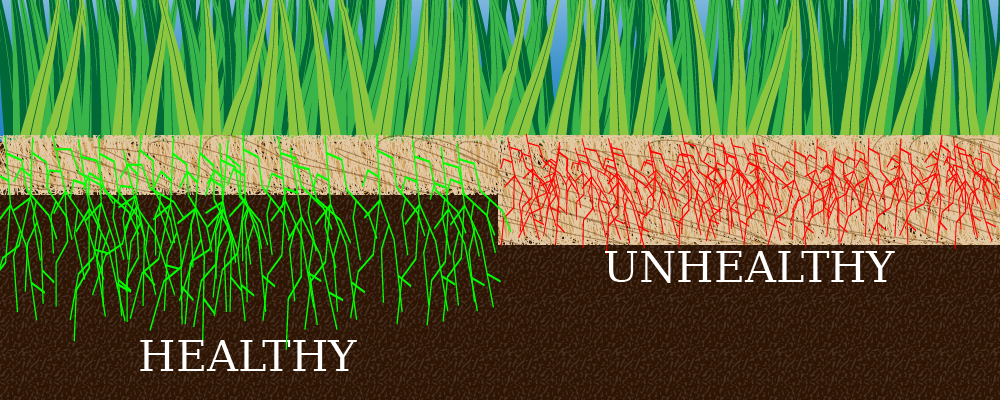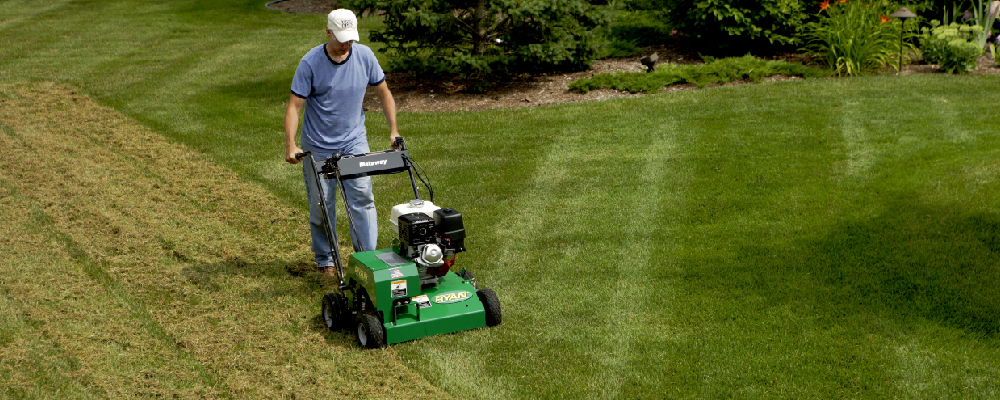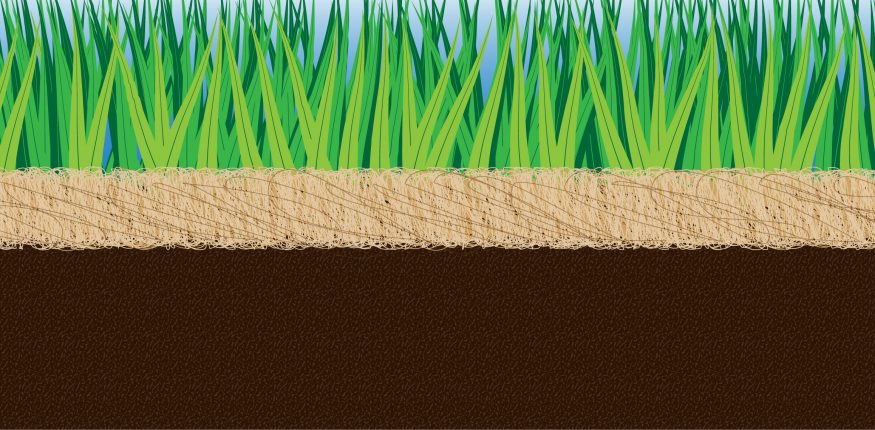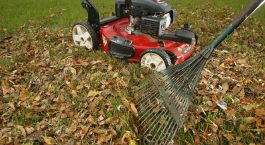I have mentioned thatch in quite a few blogs, but what exactly is it? Should you be concerned about it?
Thatch is the tightly woven layer of stems, leaves, roots, and other organic matter that builds up between your soil and growing grass. It is a normal component to actively growing grass. Thatch is the result of organic matter taking time to decompose. Some organic matter such as grass clippings and mulched leaves, break down quickly, but other organic matter takes time to decompose. All the stuff with a long decomposition process can lead to an unhealthy amount of thatch.
Healthy Vs. Unhealthy Thatch

A healthy lawn has about 1/2″ of thatch. Once the layer grows to be 3/4″ or thicker, it can become an issue. A thin layer aids in maintaining a consistent soil temperature and moisture. The layer traps in heat as temperatures cool and shields the soil from intense sunlight in the heat. In addition, it allows water and nutrients to permeate the surface more evenly, then traps in the moisture afterwards.
While a thin layer is beneficial, a thick layer can quickly harm your lawn. As thatch approaches an inch in thickness, it becomes a barrier to all the important stuff. Water, nutrients, and sunlight will have difficulty penetrating to the soil. As a result, grass roots will begin to grow in the thatch as opposed to the soil. Additionally, the thatch can trap in moisture becoming a breeding ground for bacteria, disease, and pests.
Grass developing shallow roots will lead to multiple issues. Roots will be exposed to harsh conditions that constantly fluctuate. Moreover, they will not be able to get much needed nutrients only available in the soil. This can quickly lead to brown or bare patches.
Check Your Lawn
It is fairly easy to monitor your thatch levels. Just remove a plug of soil using a shovel, trowel, or other device. Then use a ruler to measure how thick the layer is. Remember you want to have about 1/2″ and no more than 3/4″.
Dethatching

If you have excessive thatch, there are many ways to thin it back down. The cheapest method is to get a thatch rake that will allow you to go around the yard and break up your thatch the same way you would rake up leaves. You would then go back over the lawn with a leaf vacuum, yard vacuum, or garden rake to remove all the debris. Another option is to rent/purchase a power rake/dethatcher. These machines are made to remove the thatch from your grass and work much faster than a rake. They can be set to different settings depending on the type of grass you have and how thick your thatch is. Most professional lawn care providers will also dethatch or power rake your lawn for you.
An alternative to dethatching is aerating. While aerating is not the same as dethatching, it can generally aid in thatch control. Furthermore, aerating annually will promote lawn health which can significantly decrease thatch buildup before it becomes an issue. (Learn more about aeration here)



